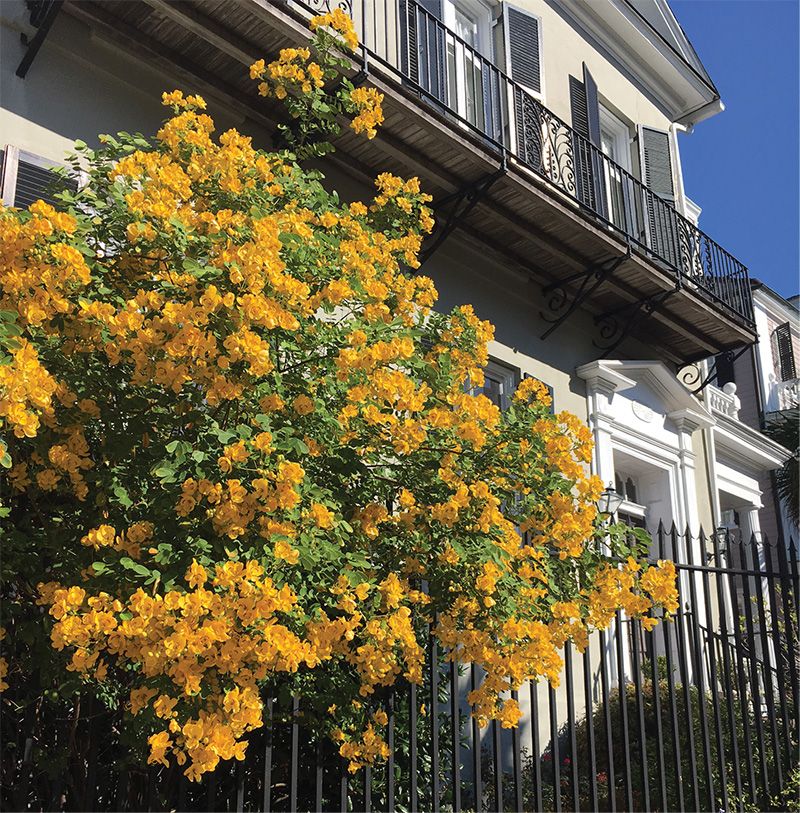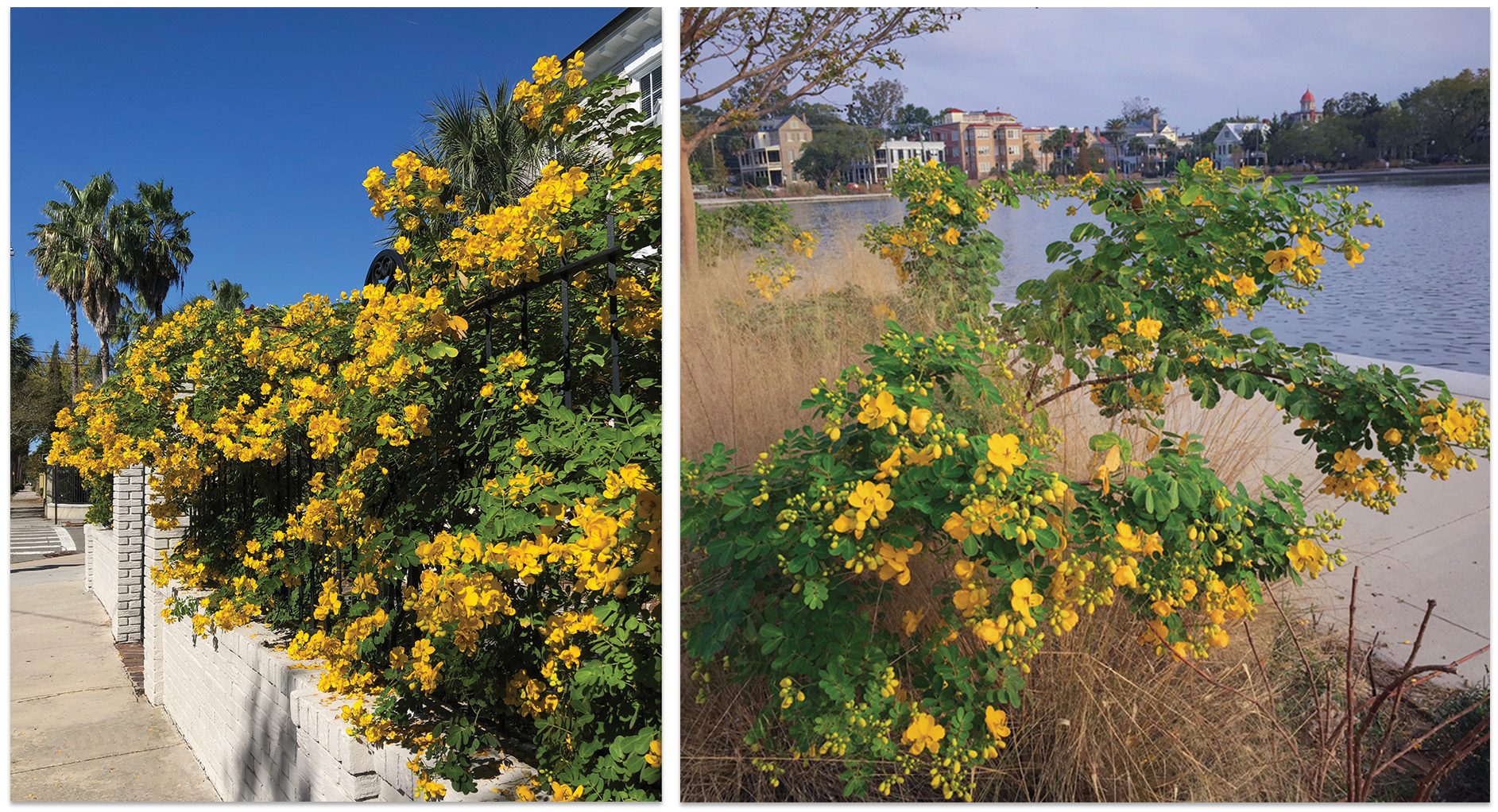Rambling senna serves as a valuable source of cool-season color

A senna in full bloom spills over a fence, displaying its natural leggy habit.
When few other blooms brighten the Lowcountry, Senna bicapsularis bursts into golden flame. The showboat’s common names advertise its unique features: “rambling senna” for a leggy growth habit; “Christmas bush” since it’ll glow through the holidays; and “butterfly bush” because of its flower shape or flair for attracting pollinators, depending on who you ask. Some also call the shrub “cassia”—a throwback to the genus in which it was formerly classified.
Rambling senna is a plant of many personalities, affirms Kellen Goodell, a horticulturist with the Charleston Parks Conservancy. If left to its own devices, it sends up multiple stalks that reach six to 12 feet tall, arching this way and that. You may see it cascading over fences or leaning on neighboring shrubs.
Yet gardeners can easily train the low-maintenance tropical into other forms. The Conservancy encourages a shorter, fuller shape in the sennas that grow along the Ashley Avenue side of Colonial Lake. Goodell cuts all the stems to 12 to 24 inches in January or February. Then in June, he cuts them in half. He may follow up with a lighter prune later in the summer. This regimen “promotes denser growth and better air circulation,” he explains. “It lowers the shrubs’ water requirements during the hot months and leads to more compact blooms.”

(Left) Blue skies and blooming senna: that’s fall color, Charleston style. (Right) At Colonial Lake, pruning keeps sennas short—six to eight feet tall—and full.
Sennas can also be shaped into striking specimen trees, with the foliage and blooms clustered atop a “trunk.” Goodell explains, “Cut most stems to the ground, leaving only two to four strong central ones; tie those to a stake.” Keep the canopy nice and full with summer pruning.
Unless it’s covered, this native of South America will die to the ground in a hard freeze. However, “the roots should survive and will put out new growth in spring,” says Goodell, who suggests a late-winter dressing of mushroom compost each year.
The Basics
Pair Up!
Looking for plants to partner with rambling senna? Take your cues from Colonial Lake's display